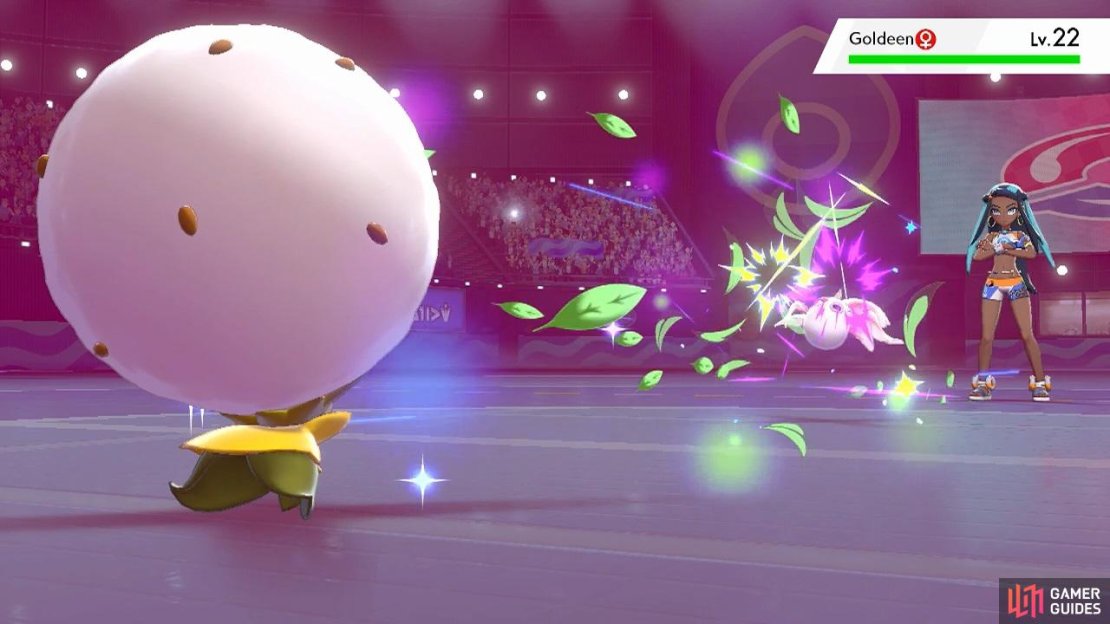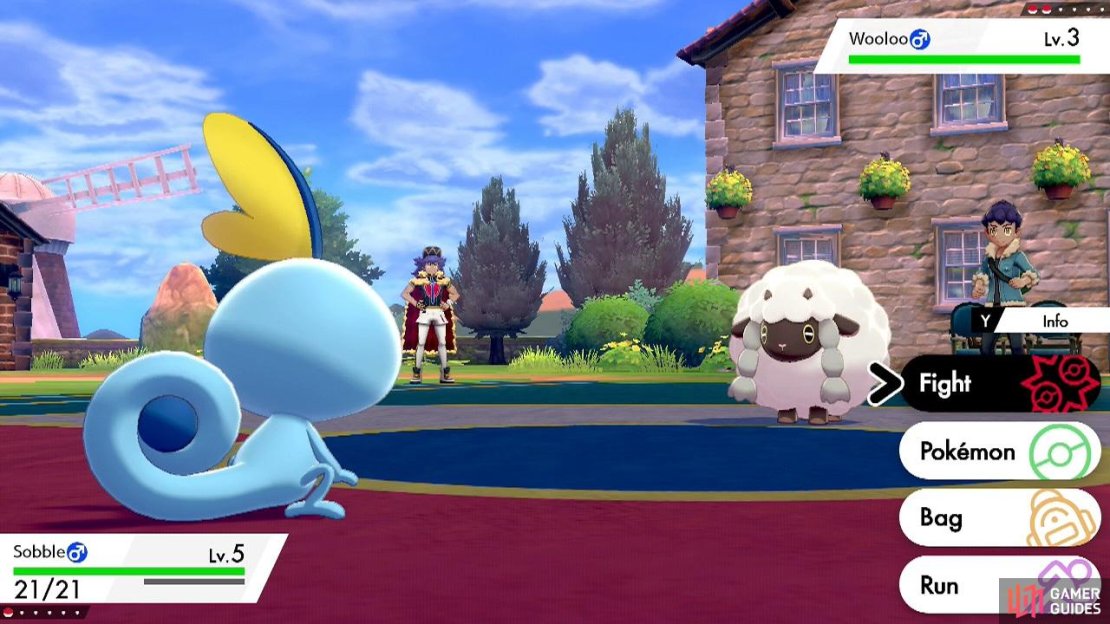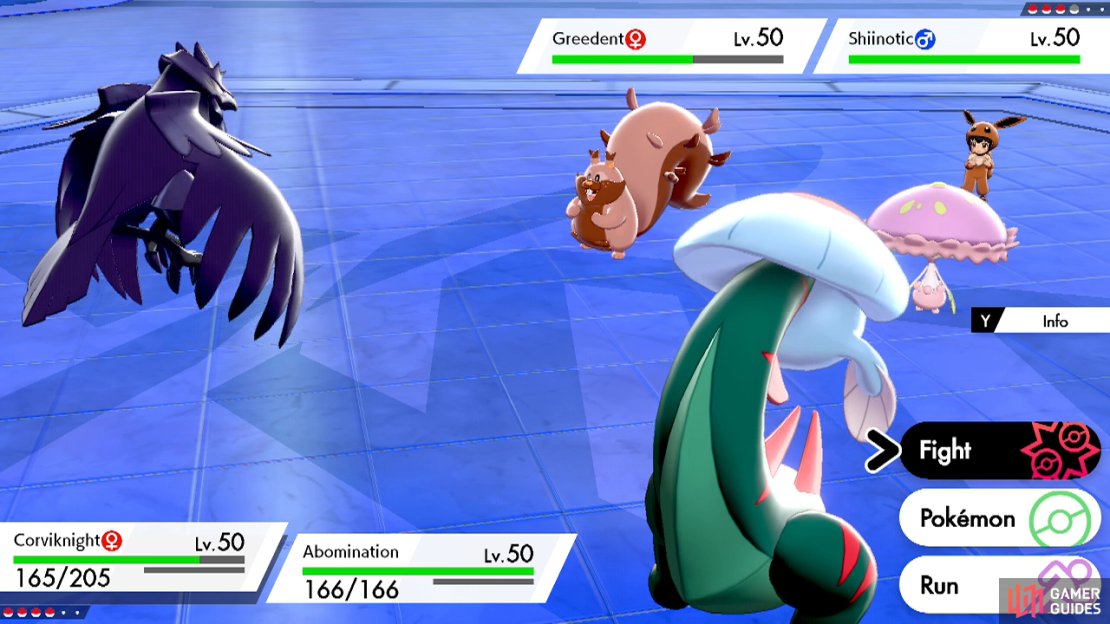The road to becoming an expert starts with the basics.
Pokémon battles are a crucial element of the series. No matter which way you turn, a battle’s never too far away. Whether it’s a wild Pokémon determined to protect its turf or a fellow Pokémon trainer who’s keen to prove their superiority, you’ll need to learn to defend yourself, lest you be chewed alive. Thankfully, your Pokémon pals are happy to put up a good fight!
Battle Flow¶
It doesn’t matter if your foe is a trainer or wild Pokémon; the mechanics are the same. When a battle begins, you and the opposing trainer (if there is one) will each send out one Pokémon. In your case, you’ll automatically send out the first Pokémon in your party–the one in the top-most position. But if that Pokémon has fainted, you’ll send out the next available one.
Battles in Pokémon are turn-based. Each turn, you and your opponent must select an action to perform. You’ve got all the time in the world, so don’t rush and carefully consider your options. However, during multiplayer battles, there will be a time limit in place. Although when you reach that stage, you should have plentiful battling experience under your belt!
Battle Options¶
You can also press the Y Button before choosing an action to check your Pokémon or opponent’s status.
During a battle, the following options will be available to you:
-
Fight: This will bring up your current Pokémon’s moves. Each Pokémon can learn up to 4 moves; the number next to a move (its PP value) indicates how many times it can be used. If you’re unsure about what a move does, you can press the Y Button to view its description.
-
Pokémon: Choose this to view your Pokémon party. From here, you can check the stats of your Pokémon or switch out your current Pokémon for a new one. If your current Pokémon has taken heavy damage or is at a disadvantage, switching may be beneficial. But keep in mind that your opponent will get a free turn.
-
Bag: This lets you open your bag to use healing or battle-related items. If your Pokémon has taken a beating or is suffering from a debilitating status condition, you may want to fix them up. Likewise, you could use battle items to give your Pokémon an edge in battle. Just make sure the coast is clear!
-
Run: If things are looking bad, escape is a valid tactic. Like they say, live to fight another day! That said, you can’t run from battles with NPC trainers or Max Raid Battles–only wild battles and multiplayer battles. Also, if your Pokémon’s Speed is too low, your escape attempt may fail.
Battle Outcomes¶
After both sides have selected an action, the Pokémon with the higher Speed stat will generally go first, followed by the remaining Pokémon. However, some moves like Quick Attack have increased priority, so be cautious–especially when your Pokémon are at low HP. If switching or using an item, that action will always have priority over a Pokémon’s moves.
If a Pokémon is hit by a move, their HP may decrease. Once a Pokémon’s HP falls to 0, it will faint and be removed from battle. During a trainer battle, the owner of a fainted Pokémon will need to send out another Pokémon from their party; if they have no more, they lose the battle. Meanwhile, when a wild Pokémon is defeated (or captured), the battle immediately ends.
When you knock out (KO) or capture a Pokémon, all of your Pokémon will earn experience points, although Pokémon that didn’t contribute to the fight will earn less. Once a Pokémon has gained enough experience, they will Level Up, increasing their stats. Additionally, they may learn new moves or even evolve into a stronger form. Defeating a trainer will also reward you with money.
Double Battles¶
Double the Pokémon, double the fun! But also double the headaches!
During the main story, you may run into Double Battles on rare occasions. As the name suggests, these battles involve two Pokémon on each side. You’ll pick an action for each of your Pokémon, while your opponent does the same. Otherwise, the flow and mechanics are the same as a regular Single Battle.
Of note, certain moves are capable of hitting multiple targets in Double Battles (as well as Max Raid Battles). Be sure to check the description of your moves! Ones that mention “opposing Pokémon” will hit both of the opponent’s Pokémon. But there are some moves like Earthquake that hit all Pokémon, even your own!
Furthermore, there’s a branch of Double Battles called Multi Battles. Instead of you controlling two Pokémon, you’ll team up with another player–and you’ll both control one Pokémon at a time. Similarly, you’ll be facing off against a team of two opponents. These battles can be fun, but also chaotic if you don’t co-ordinate properly!



No Comments